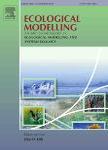版权所有:内蒙古大学图书馆 技术提供:维普资讯• 智图
内蒙古自治区呼和浩特市赛罕区大学西街235号 邮编: 010021

作者机构:Univ Bremen Ctr Environm Res & Technol Dept Gen & Theoret Ecol 10 D-28334 Bremen Germany Univ Kiel Ctr Ecol D-24118 Kiel Germany
出 版 物:《ECOLOGICAL MODELLING》 (生态模拟)
年 卷 期:2006年第194卷第1-3期
页 面:102-113页
核心收录:
学科分类:0710[理学-生物学] 07[理学] 09[农学] 0713[理学-生态学]
主 题:individual-based model object-oriented programming SIMULA carabid beetle (Abax parallelepipedus) roach (Rutilus rutilus) black alder (Alnus glutinosa) European robin (Erithacus rubecula) small mammals (Clethrionomys sp., Microtus sp.) GenEERA oilseed rape (Brassica napus) ecological theory
摘 要:Individual-based models offer a structurally unique (and unifying) approach to ecological applications. Model results also provide an important input into ecological theory. The approach operates on the lowest organisational level considered in ecology (i.e. activities of individuals). Simulating the actions of single organisms allows to study how the properties of higher level ecological entities like swarms, populations, trophic networks and regional distribution patterns emerge. Unlike other approaches working on higher abstraction levels, individual-based models can represent structural-functional relationships similar to the pattern of available ecological knowledge. To demonstrate the range of applications of the approach we will address four issues using comprehensive data from two projects performed in Northern Germany. First, a generic model structure for individual-based models operating on the basis of object-oriented programming is explained. It allows to capture a large variety of different ecological interactions. In the second step, application examples from different fields of ecology are explicated. Plants and animals, active in terrestrial or aquatic environments, exhibit interaction types, which lead to self-organised structural-functional networks resulting from single organismic interactions. Spatial relations, dispersal, bio-energetics, plasticity of growth and form are topics which can be successfully dealt with in individual-based models. The wide range of qualitatively different interactions that can be represented is responsible for the importance the approach has gained in ecology. In the third step, we show how the approach is used in a current research project to anticipate implications of genetically modified plants in agriculture. An individual-based model is used to simulate small-scale dispersal and persistence. The results are used for geostatistic extrapolation to the regional scale. Oilseed rape (Brassica napus) serves as an examp